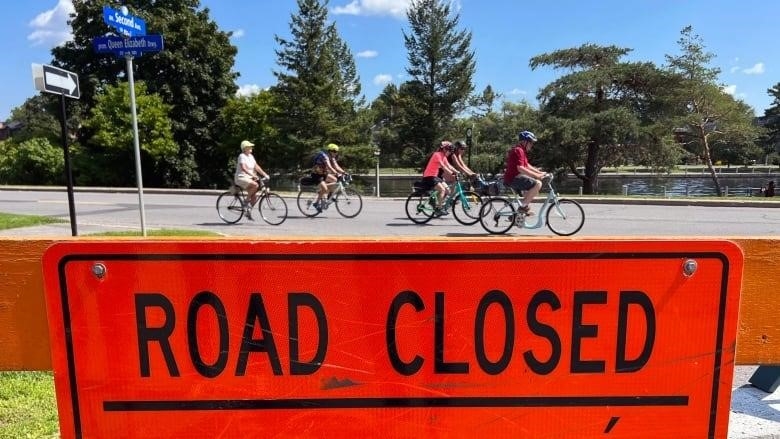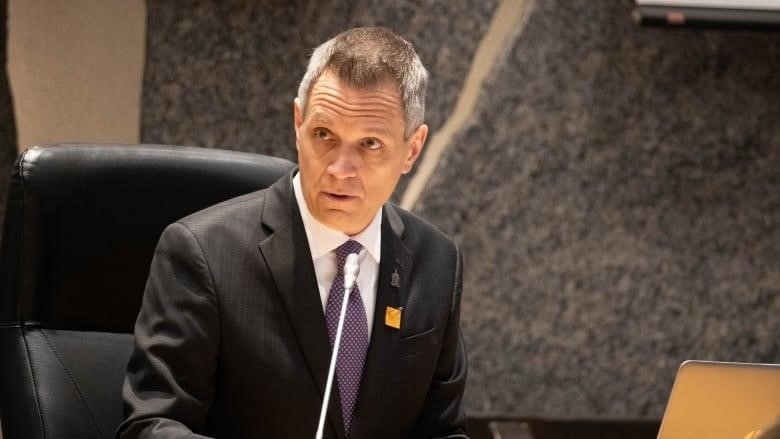
In a message, the NCC manager said that the Ottawa report had “methodological errors.
Even though internal emails from the National Capital Commission suggest that “miscalculations” were made, Ottawa’s mayor is sticking to city data that shows pedestrians and cyclists don’t use the Queen Elizabeth Driveway much.
Mark Sutcliffe told reporters after Wednesday’s council meeting, “I stand by what I’ve said all along.” He also said that he thought the statistics were “collected well.”
His comments are in response to a report byPressProgress, Using emails they got through a Freedom of Information Act request, they said that the NCC had problems with the numbers that the city had collected on “active use” of a two-kilometer stretch of the parkway.
CBC got a copy of the internal emails from the city on Wednesday night.
In an email sent on May 1, a manager with the NCC said that the organization’s staff had read an April city report about the effects of the QED’s closing.
The manager wrote that some parts of the report “should be re-examined” and gave a list of general topics to talk about, such as “methodological errors,” possible “miscalculations,” and a “misrepresentation” of the active user analysis.
In an email to CBC, Phil Landry, the city’s director of traffic services, said that staff had told the NCC that the document was a “operational report” that was “limited to a reporting and analysis of the data collected.”
He said that the city stands by the report and the way it was made.
When asked what specific problems its staff had with the way the city reported, the NCC did not answer directly.
Instead, a representative wrote in an email that the stretch of QED has been visited by almost 74,000 people since May and that talks with the city are still going on.
The NCC said that it is also gathering more information and conducting a public survey during the current season. This will help it decide how to move forward with its active use initiatives in the future.

Between Fifth Avenue and Somerset Street, between 8 a.m. and 8 p.m., from July 1 to September 4, both lanes of the QED along the Rideau Canal will be closed to cars.
The shutdown only happens on weekends and holidays from May 31 to June 25 and from September 9 to October 9.
The mayor asks the NCC to “work together.
Sutcliffe said he isn’t against closings on weekends, evenings, or holidays, but he disagrees with the NCC about the exact schedule.
When asked about the city’s data on Wednesday, he pointed the finger at the Crown corporation.
When the city was first asked about closing part of the parkway, the mayor said, staff told the NCC that it would be “problematic for traffic,” especially at rush hours, but the closure still happened.
He said, “I would ask the NCC why people haven’t worked together more on this.”
After Sutcliffe posted a video on social media on August 9, the QED debate went into a new gear.
In it, he stood on the road and told the camera that very few cyclists and pedestrians were taking advantage of the closure, and that the path along the canal could easily handle that traffic.
Sutcliffe said that closing the road to cars causes traffic jams in the neighborhood, which makes it hard for drivers, including those in emergency vehicles, to get around.
In the video, he says, “Think about how many cars have to move every minute so that one or two cyclists can use the road instead of the path.”
In his comments on Wednesday, the mayor complained about the lack of talk about the QED and said that he would like to see more bike- and pedestrian-friendly areas built.
“Unfortunately, I think this conversation has turned into a bit of a “cars vs. bikes” thing. “That has nothing to do with it,” he told the press. “People are talking about where the best place is to give more room to cyclists.”
Advocates hope that the NCC will stand firm
Neil Saravanamuttoo, who helped organize a mass bike ride on the QED after Sutcliffe’s video, said he uses that stretch of road almost every day and sees lots of cyclists, joggers, and wheelchair users taking advantage of the active use program.
He asked if the city was undercounting in its data and why staff didn’t seem to want to work with the NCC to get the most accurate data they could.
Saravanamuttoo, who is also the deputy director of a non-profit started by Sutcliffe’s main opponent in the 2022 election, wants the program to keep going.
He said, “I hope the NCC will stand their ground on this.””This has become such a valuable space for people.”
WATCH | An advocate says pedestrians and cyclists should still be able to use Queen Elizabeth Parkway:
- Get all the news you want, no matter what. Get our free CBC News app here.
